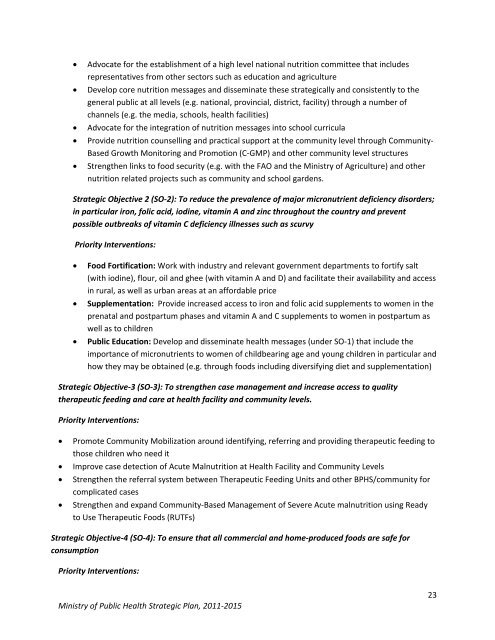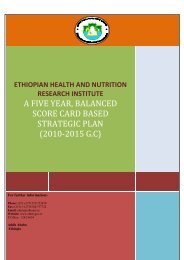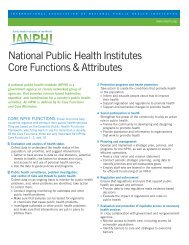Afghanistan Afghan Public Health Institute Strategic Plan - ianphi
Afghanistan Afghan Public Health Institute Strategic Plan - ianphi
Afghanistan Afghan Public Health Institute Strategic Plan - ianphi
You also want an ePaper? Increase the reach of your titles
YUMPU automatically turns print PDFs into web optimized ePapers that Google loves.
Advocate for the establishment of a high level national nutrition committee that includesrepresentatives from other sectors such as education and agricultureDevelop core nutrition messages and disseminate these strategically and consistently to thegeneral public at all levels (e.g. national, provincial, district, facility) through a number ofchannels (e.g. the media, schools, health facilities)Advocate for the integration of nutrition messages into school curriculaProvide nutrition counselling and practical support at the community level through Community‐Based Growth Monitoring and Promotion (C‐GMP) and other community level structuresStrengthen links to food security (e.g. with the FAO and the Ministry of Agriculture) and othernutrition related projects such as community and school gardens.<strong>Strategic</strong> Objective 2 (SO‐2): To reduce the prevalence of major micronutrient deficiency disorders;in particular iron, folic acid, iodine, vitamin A and zinc throughout the country and preventpossible outbreaks of vitamin C deficiency illnesses such as scurvyPriority Interventions:Food Fortification: Work with industry and relevant government departments to fortify salt(with iodine), flour, oil and ghee (with vitamin A and D) and facilitate their availability and accessin rural, as well as urban areas at an affordable priceSupplementation: Provide increased access to iron and folic acid supplements to women in theprenatal and postpartum phases and vitamin A and C supplements to women in postpartum aswell as to children<strong>Public</strong> Education: Develop and disseminate health messages (under SO‐1) that include theimportance of micronutrients to women of childbearing age and young children in particular andhow they may be obtained (e.g. through foods including diversifying diet and supplementation)<strong>Strategic</strong> Objective‐3 (SO‐3): To strengthen case management and increase access to qualitytherapeutic feeding and care at health facility and community levels.Priority Interventions:Promote Community Mobilization around identifying, referring and providing therapeutic feeding tothose children who need itImprove case detection of Acute Malnutrition at <strong>Health</strong> Facility and Community LevelsStrengthen the referral system between Therapeutic Feeding Units and other BPHS/community forcomplicated casesStrengthen and expand Community‐Based Management of Severe Acute malnutrition using Readyto Use Therapeutic Foods (RUTFs)<strong>Strategic</strong> Objective‐4 (SO‐4): To ensure that all commercial and home‐produced foods are safe forconsumptionPriority Interventions:Ministry of <strong>Public</strong> <strong>Health</strong> <strong>Strategic</strong> <strong>Plan</strong>, 2011‐201523




